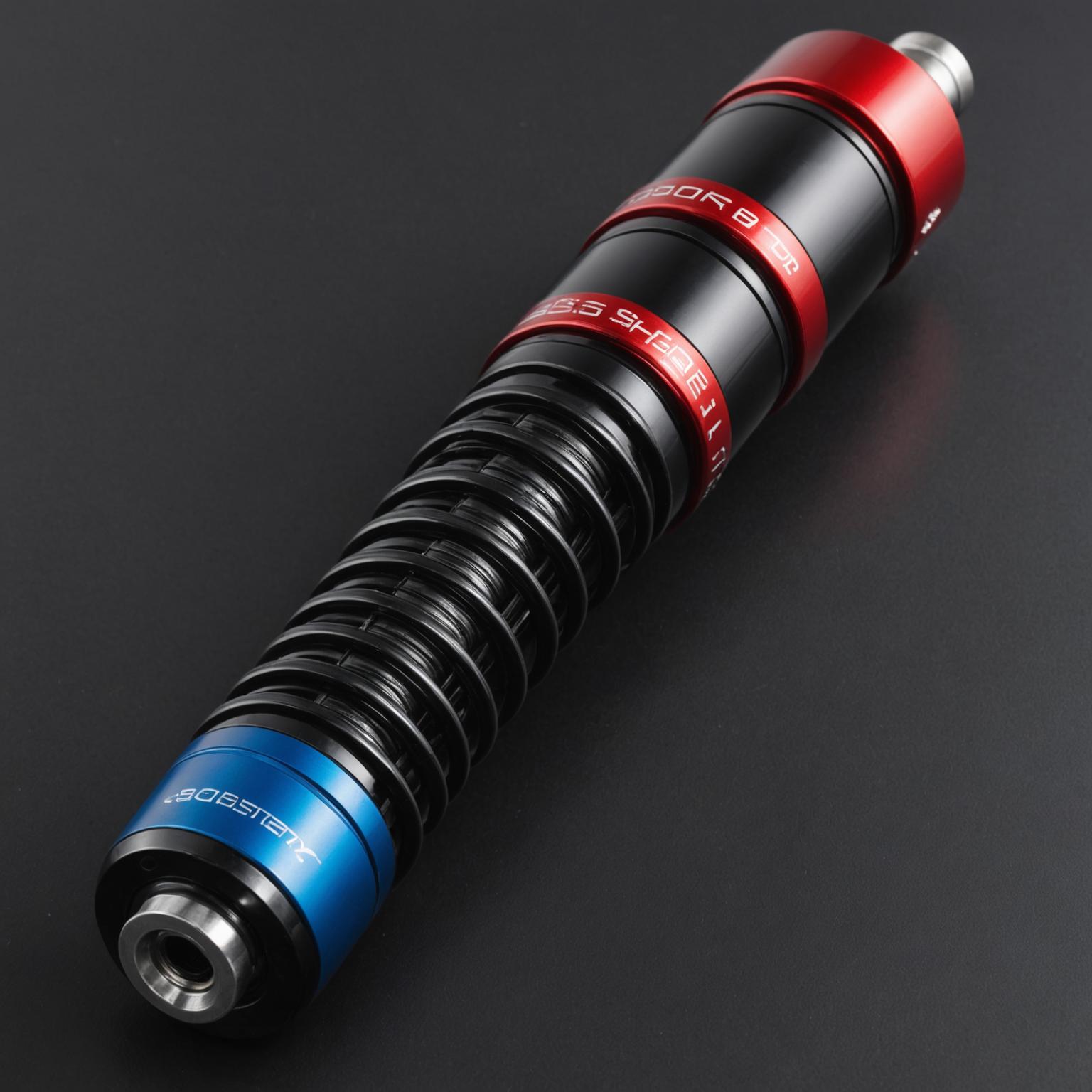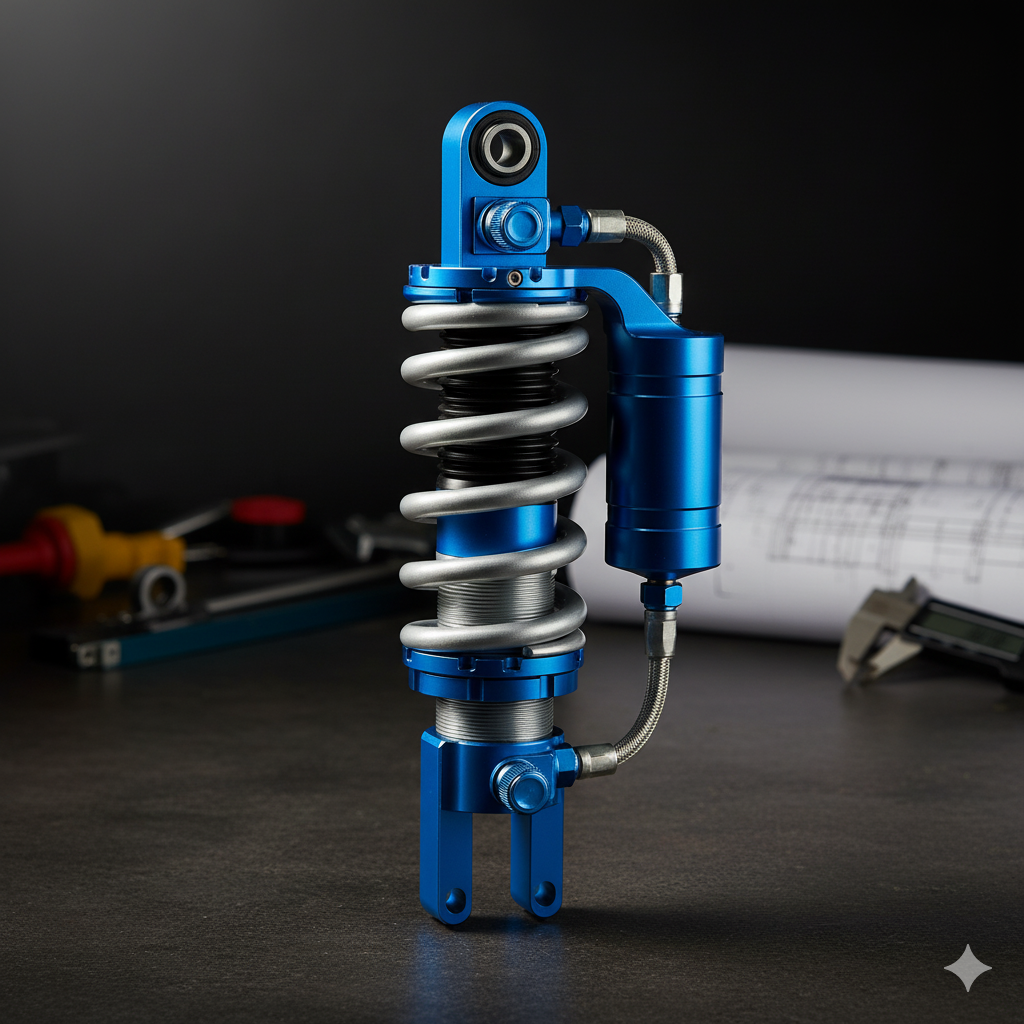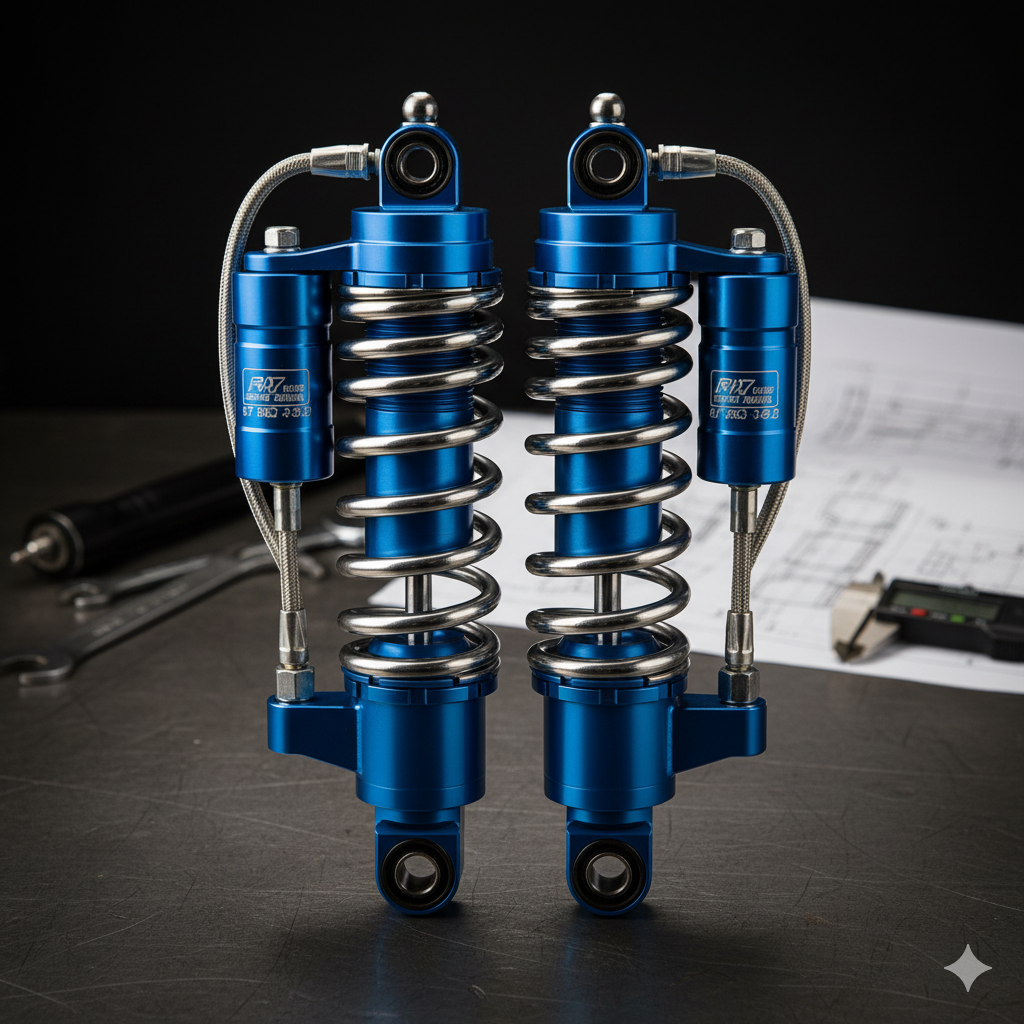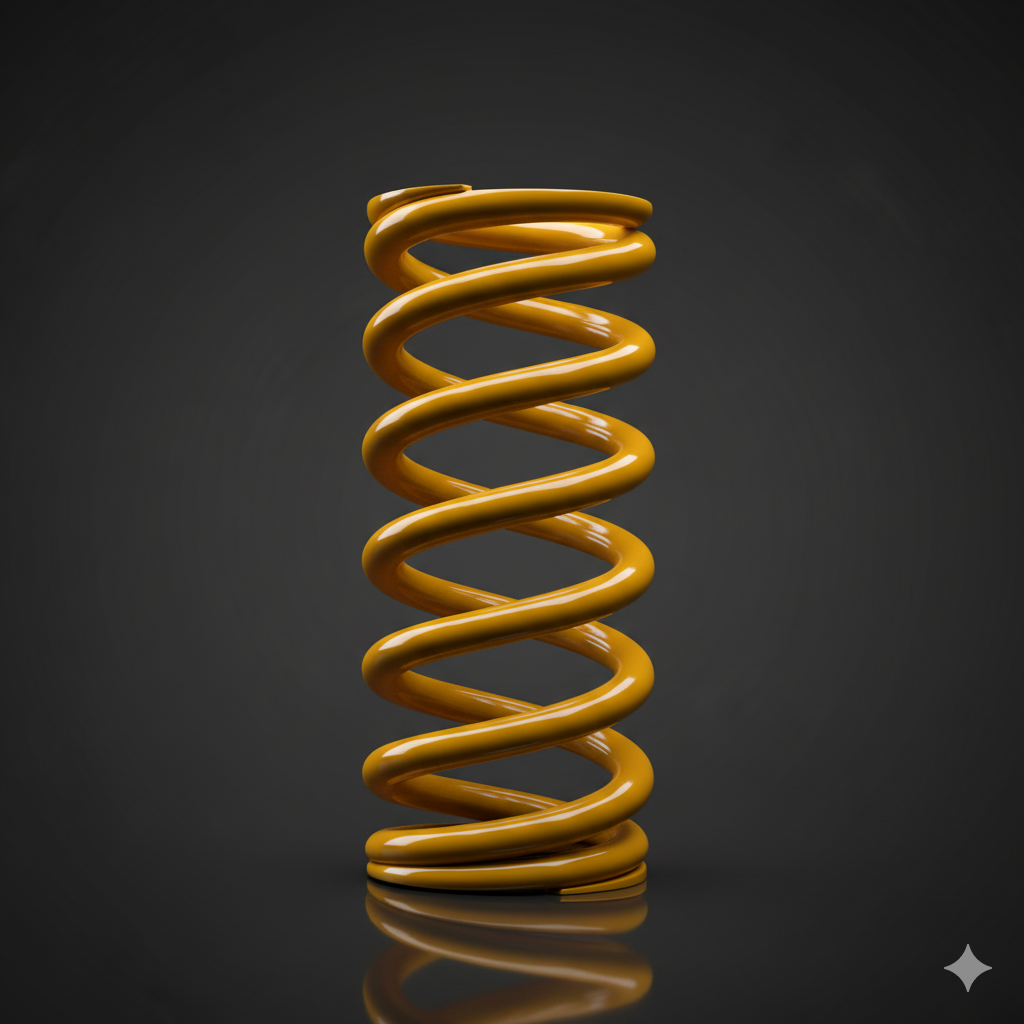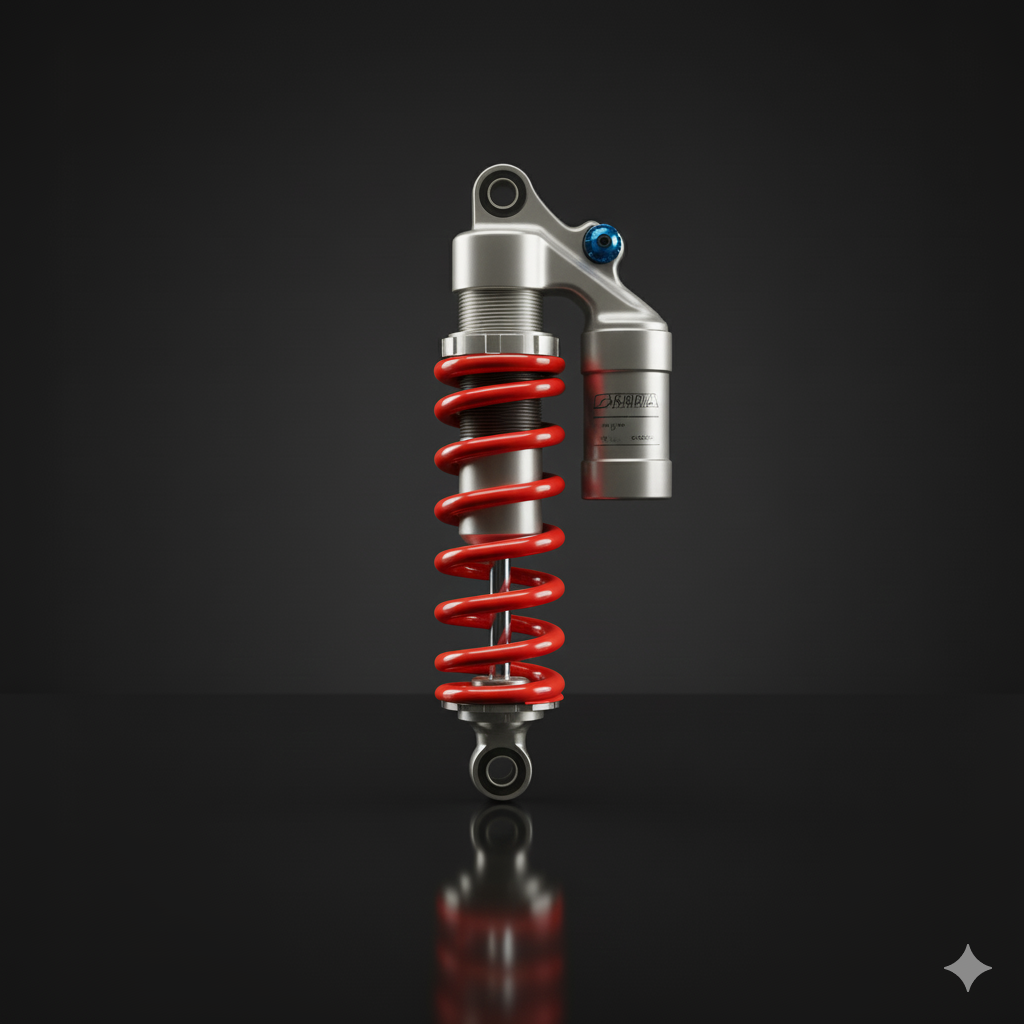
Adjustable Shock Absorber Manufacturer: Engineering Flexibility for Performance and Comfort
The Challenge: One Suspension Setting Can’t Fit Every Road
Motorcycles and vehicles face radically different environments—from smooth highways to unpaved terrain. A fixed damping system may perform well in one condition but compromise control or comfort in another.
Adjustable shock absorbers solve this by allowing riders and engineers to fine-tune suspension behavior in real time.
Yet designing such flexibility requires mastery over three conflicting goals: stability, comfort, and responsiveness.
That’s where modern shock absorber manufacturers like Bedo have shifted from mechanical assembly to precision hydraulic engineering—balancing adaptability with endurance.
Engineering Foundation: How Adjustable Damping Works
An adjustable shock absorber operates on the same fundamental principle as a hydraulic damper—converting motion into resistance through controlled oil flow.
The innovation lies in its valve system and multi-stage control mechanisms that let users vary the damping rate.
Core Components:
-
Compression and Rebound Valves: Control fluid flow as the piston moves in both directions, affecting comfort and control.
-
Preload Adjusters: Alter the initial spring tension to adapt for passenger load or luggage weight.
-
Adjustable Needle Valves: Provide continuous fine-tuning between soft and firm damping levels.
-
Gas Reservoir (Nitrogen-Charged): Prevents cavitation and ensures consistent performance during aggressive riding.
This precision engineering allows real-time control over ride stiffness and handling feedback—essential for performance motorcycles and demanding terrain.
Traditional vs. Adjustable Shock Absorbers
| Feature | Fixed Shock Absorber | Adjustable Shock Absorber (Bedo Standard) |
|---|---|---|
| Damping Control | Pre-set, non-modifiable | Tunable compression & rebound settings |
| Ride Comfort | Optimized for single condition | Multi-condition adaptability |
| Material Construction | Steel piston with basic seals | Hard-anodized aluminum with low-friction seals |
| Heat Dissipation | Limited | Gas-charged with thermal balance system |
| Maintenance | Frequent due to wear | Extended lifespan via replaceable cartridges |
| Application | Entry-level or commuter models | Performance, touring, and off-road vehicles |
The ability to adjust damping transforms the suspension from a fixed mechanism into a dynamic control system, capable of adapting to both environment and rider intent.
Performance Gains Through Adjustable Design
1. Stability and Handling
Fine-tuning compression and rebound rates allows sharper control in corners and reduced chassis dive during braking.
2. Comfort on Variable Terrain
Soft settings absorb bumps and uneven surfaces, reducing rider fatigue over long distances.
3. Load and Weight Management
Preload adjustments maintain balance with passengers, luggage, or varying fuel levels—ensuring consistent geometry.
4. Thermal and Mechanical Durability
Gas-charged reservoirs maintain oil integrity even under prolonged vibration and temperature variation.
5. Versatility Across Models
Adjustable units serve street, touring, and sport bikes, offering universal adaptability without compromising quality.
Selection Reference: Finding the Right Adjustable System
Choosing an adjustable shock absorber is an engineering decision, not a simple parts swap.
| Use Case | Adjustment Focus | Recommended Design |
|---|---|---|
| Sport Motorcycles | Rebound damping | Monotube with external reservoir |
| Touring Motorcycles | Preload + compression | Dual-tube with remote adjuster |
| Off-Road Vehicles | Multi-axis damping control | High-travel, gas-charged system |
| Utility Bikes | Load support | Coil-over design with heavy preload spring |
| Electric Scooters | Energy efficiency | Lightweight aluminum structure |
Sourcing Checklist:
✔ Validate manufacturer testing under ISO/TS16949 or equivalent.
✔ Check for real damping curve data and cycle fatigue testing (≥500,000 cycles).
✔ Confirm availability of replaceable cartridge designs for easy maintenance.
✔ Review customization options for spring stiffness and mounting geometry.
Industry Q&A: Insights from Bedo’s Engineering Team
Q1: Can Bedo shock absorbers be fine-tuned for different riding environments?
Yes. Our systems offer multi-level rebound and compression settings, supported by precision needle valves and preload adjusters for terrain-specific calibration.
Q2: How does Bedo ensure damping consistency across long rides?
Each unit is tested for thermal stability and fluid cavitation resistance, ensuring identical performance across extended operation cycles.
Q3: Are these adjustable models suitable for OEM integration?
Absolutely. Bedo’s modular designs are engineered for direct OEM assembly, compatible with multiple suspension geometries.
Q4: What customization levels are available?
From material coatings to valve calibration curves, Bedo provides OEM-specific customization supported by simulation analysis and 3D modeling.
Adjustable Engineering for the Future of Ride Dynamics
As vehicle design evolves toward personalization and precision, adjustable shock absorbers have become essential to achieving both control and comfort.
Through meticulous hydraulic engineering, advanced materials, and modular manufacturing, Bedo delivers systems that adapt as intelligently as they perform.
Whether for off-road endurance, urban commuting, or high-speed touring, Bedo’s adjustable suspension solutions redefine what riders expect from modern handling.
Explore our full line of suspension technologies on the homepage or reach out via the contact page to discuss OEM and custom project requirements.

